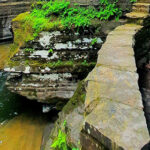The Dalai Lama’s message to the world..
Almost six decades have passed since I left my homeland, Tibet, and became a refugee. Thanks to the kindness of the government and people of India, we Tibetans found a second home where we could live in dignity and freedom, able to keep our language, culture and Buddhist traditions alive.
My generation has witnessed so much violence — some historians estimate that more than 200 million people were killed in conflicts in the 20th century.
Today, there is no end in sight to the horrific violence in the Middle East, which in the case of Syria has led to the greatest refugee crisis in a generation. Appalling terrorist attacks — as we were sadly reminded this weekend — have created deep-seated fear. While it would be easy to feel a sense of hopelessness and despair, it is all the more necessary in the early years of the 21st century to be realistic and optimistic.
There are many reasons for us to be hopeful. Recognition of universal human rights, including the right to self-determination, has expanded beyond anything imagined a century ago. There is growing international consensus in support of gender equality and respect for women. Particularly among the younger generation, there is a widespread rejection of war as a means of solving problems. Across the world, many are doing valuable work to prevent terrorism, recognizing the depths of misunderstanding and the divisive idea of “us” and “them” that is so dangerous. Significant reductions in the world’s arsenal of nuclear weapons mean that setting a timetable for further reductions and ultimately the elimination of nuclear weapons — a sentiment President Obama recently reiterated in Hiroshima, Japan — no longer seems a mere dream.
There are many reasons for us to be hopeful.
The notion of absolute victory for one side and defeat of another is thoroughly outdated; in some situations, following conflict, suffering arises from a state that cannot be described as either war or peace. Violence inevitably incurs further violence. Indeed, history has shown that nonviolent resistance ushers in more durable and peaceful democracies and is more successful in removing authoritarian regimes than violent struggle.
It is not enough simply to pray. There are solutions to many of the problems we face; new mechanisms for dialogue need to be created, along with systems of education to inculcate moral values. These must be grounded in the perspective that we all belong to one human family and that together we can take action to address global challenges.
It is encouraging that we have seen many ordinary people across the world displaying great compassion toward the plight of refugees, from those who have rescued them from the sea, to those who have taken them in and provided friendship and support. As a refugee myself, I feel a strong empathy for their situation, and when we see their anguish, we should do all we can to help them. I can also understand the fears of people in host countries, who may feel overwhelmed. The combination of circumstances draws attention to the vital importance of collective action toward restoring genuine peace to the lands these refugees are fleeing.
Tibetan refugees have firsthand experience of living through such circumstances and, although we have not yet been able to return to our homeland, we are grateful for the humanitarian support we have received through the decades from friends, including the people of the United States.
We all belong to one human family.
A further source of hope is the genuine cooperation among the world’s nations toward a common goal evident in the Paris accord on climate change. When global warming threatens the health of this planet that is our only home, it is only by considering the larger global interest that local and national interests will be met.
I have a personal connection to this issue because Tibet is the world’s highest plateau and is an epicentre of global climate change, warming nearly three times as fast as the rest of the world. It is the largest repository of water outside the two poles and the source of the Earth’s most extensive river system, critical to the world’s 10 most densely populated nations.
To find solutions to the environmental crisis and violent conflicts that confront us in the 21st century, we need to seek new answers. Even though I am a Buddhist monk, I believe that these solutions lie beyond religion in the promotion of a concept I call secular ethics. This is an approach to educating ourselves based on scientific findings, common experience and common sense — a more universal approach to the promotion of our shared human values.
We need to seek new answers.
Over more than three decades, my discussions with scientists, educators and social workers from across the globe have revealed common concerns. As a result, we have developed a system that incorporates an education of the heart, which based on study of the workings of the mind and emotions through scholarship and scientific research, rather than religious practice. Since we need moral principles — compassion, respect for others, kindness, taking responsibility — in every field of human activity, we are working to help schools and colleges create opportunities for young people to develop greater self-awareness, to learn how to manage destructive emotions and cultivate social skills. Such training is being incorporated into the curriculum of many schools in North America and Europe — I am involved with work at Emory University on a new curriculum on secular ethics that is being introduced in several schools in India and the United States.
It is our collective responsibility to ensure that the 21st century does not repeat the pain and bloodshed of the past. Because human nature is basically compassionate, I believe it is possible that decades from now we will see an era of peace — but we must work together as global citizens of a shared planet.










































